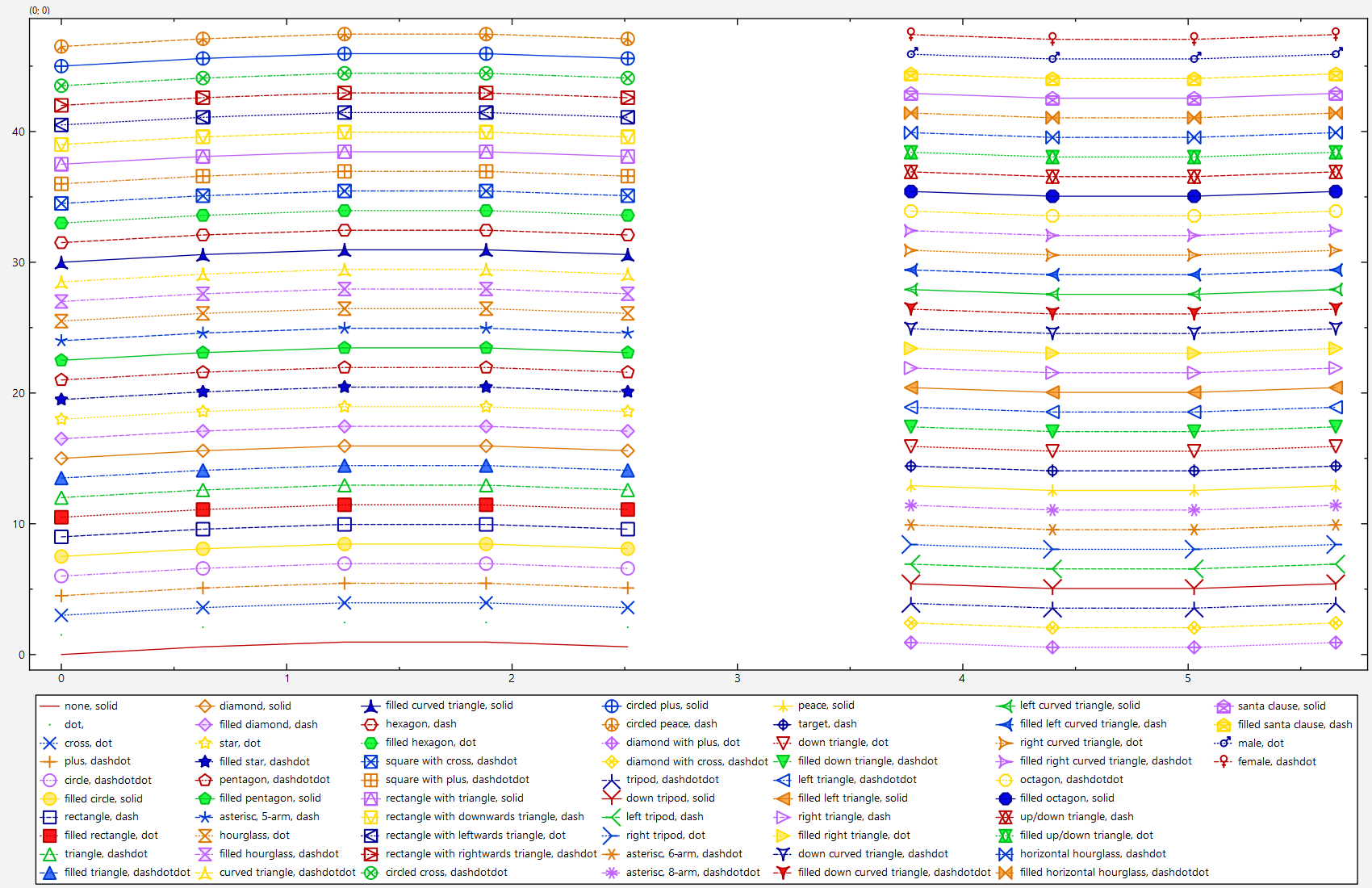| .. | ||
| CMakeLists.txt | ||
| README.md | ||
| symbols_and_styles_and_lib.pro | ||
| symbols_and_styles.cpp | ||
| symbols_and_styles.pro | ||
Example (JKQTPlotter): Line Graph with Different Symbols and Line Styles
This project (see ./examples/symbols_and_styles/) simply creates a JKQTPlotter widget (as a new window) and adds a single line-graph (a sine-wave). Data is initialized from two QVector objects.
The source code of the main application can be found in symbols_and_styles.cpp. Mainly several graphs are generated in a loop and then different symbol and line styles are applied to the graph (set by graph->setSymbolType() for the symbol and graph->setLineStyle() for the line style). The colors are set automtically from an internal default palette. The main loop looks like this:
QVector<Qt::PenStyle> pens {Qt::NoPen, Qt::SolidLine, Qt::DashLine, Qt::DotLine, Qt::DashDotLine, Qt::DashDotDotLine };
int ipen=0;
for (int symbolID=0; symbolID<=JKQTPMaxSymbolID; symbolID++) {
// generate some plot data
QVector<double> Y;
for (auto& xx: X) {
Y<<sin(xx)+static_cast<double>(symbolID)*1.5;
}
JKQTPXYLineGraph* graph=new JKQTPXYLineGraph(&plot);
// copy data into datastore and immediately set the yColumn
graph->setXColumn(columnX);
graph->setYColumn(ds->addCopiedColumn(Y, "y"+QString::number(symbolID)));
// set symbol + pen style and color
graph->setSymbolType(static_cast<JKQTPGraphSymbols>(symbolID));
graph->setLineStyle(pens[ipen]);
// set symbol size
graph->setSymbolSize(14);
// set width of symbol lines
graph->setSymbolLineWidth(1.5);
// set width of graph line
graph->setLineWidth(1);
// graph title is made from symbol+penstyle
graph->setTitle(JKQTPGraphSymbols2NameString(static_cast<JKQTPGraphSymbols>(graph->getSymbolType()))+QString(", ")+jkqtp_QPenStyle2String(graph->getLineStyle()));
// add the graph to the plot, so it is actually displayed
plot.addGraph(graph);
ipen++;
if (ipen>=pens.size()) ipen=0;
}
In addition to the symbol type and line style, you can also alter the size of the symbols (graph->setSymbolSize(14)), the line-width used to draw them (graph->setSymbolLineWidth(1.5)) and the line width of the graph line (graph->setLineWidth(1)). If you want to switch off the line altogether, use graph->setDrawLine(false).
Note: There are additional, more advanced options for styling the graphs. See the example [Advanced Line and Fill Styling](@ref JKQTPlotterAdvancedLineAndFillStyling) for details.
The result looks like this:
